A washing machine is a faithful assistant in the fight for the cleanliness of your laundry. This worker also needs regular care and cleaning. It is much more reasonable to carry out general cleaning and preventive maintenance than to call repairmen or arrange fights with colonies of mold and fungi. We figure out how easy it is to clean the drum of a washing machine from dirt and mold, internal parts from scale, and the body from dirt and dust.
Cleaning the outside of the washing machine

When ordinary wet cleaning with dusting stops working, it is worth considering more effective options. Therefore, it is worth cleaning the washing machine according to the measure and frequency of use.
Removing dust in hard-to-reach places
The main problem for external cleaning of washing machines is “dust accumulation” at the joints of parts, corners and other small depressions. Cleaning up such contaminants is quite simple. Pick up a small, fine-toothed brush to easily work around nooks and crannies and more. Dilute a mild cleaner with water and thoroughly clean the surface. Wipe dry with a clean soft cloth.
We clean the rust
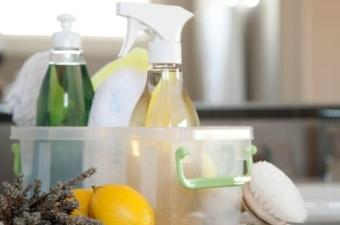
Rust may appear at the joints on the back of the device or at places that have been exposed to moisture. Special risk area - bathroom, in which high humidity is practically the norm. You can see rusty smudges when replacing parts or other work when you have to disturb and move the device. Such embarrassment happens infrequently, but it brings trouble to the owners. If you are faced with rust, you will be helped by:
- A specialized tool that is sold in the economic departments. This composition is applied to a rusty place and left for a few minutes. After cleaning and wiping with a damp cloth. Minimum time and effort.
- Vinegar and lemon juice will save medium and small rust spots. Mix the components in equal proportions and apply to the affected area, leave for a couple of hours or less. Brush and rinse. Repeat if necessary.
- Baking soda has a harsher effect. Mix soda with water until a slurry forms, apply to the affected area, leave for 15 minutes. Take a hard washcloth or metal scraper and finish the job. For severe cases, the procedure is repeated several times.
- Exotic in the fight against rust - Coca-Cola, Pepsi, Fanta. Sweet soda contains phosphoric acid, which can dissolve rust stains. Soak a cotton swab liberally in the liquid and apply to the area for 10 minutes, repeat. If possible, then immerse the rusted part in soda in its entirety.
Cleaning the washing machine drum
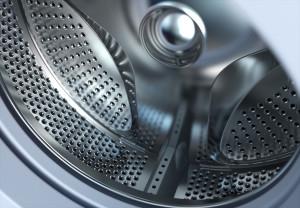
To clean the washing machine from the dirt inside, you have to work hard, because the most corrosive and persistent contaminants are hidden precisely in the depths of the drum and seal.
Sight glass
Depending on the degree of contamination, the sight glass is cleaned by the following means:
- disposable wet wipes;
- liquid for glass;
- a rosary and dishwashing liquid;
- soda gruel;
- coarse salt;
- hard sponge;
- metal scraper (with care, as diligence leads to scratches).
As a rule, stubborn dirt is a soap scum. Vinegar or citric acid will help dissolve such deposits.Heavy artillery - chlorine compounds like Domestos. Apply the product diluted with water to the glass and leave for 5 minutes, then wipe thoroughly. In very severe cases, arm yourself with a scraper.
Cleanliness of the rubber seal!

The cuff is the abode of the most terrible microbes, fungi and other delights. This is where problematic pollution comes in. Cleanliness will help diligence, a toothbrush and one of the following tools:
- for light dirt - soapy water;
- for medium - a solution of vinegar or citric acid;
- for heavy ones - bleach or blue.
Apply the product to the seal, leave for 15 minutes or more. Start brushing. Remove excess and run the machine for a long time at 90 °C. Add 400-500 ml of vinegar to the tray.
We clean the tray
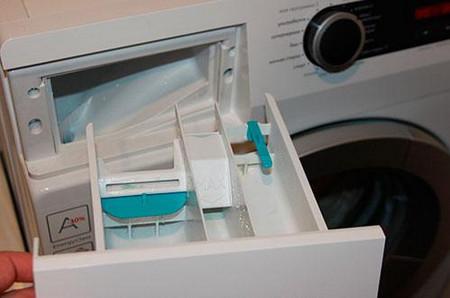
The main insidious "evil" lies in the compartment, since pollution in this area affects the quality of the wash as a whole. The following factors contribute to the appearance of dirt:
- frequent use of liquid powders, softeners and conditioners;
- the use of concentrates (very thick products) without dilution with water;
- an abundance of funds that leads to poor rinsing;
- untimely cleaning.
So, the remnants of cleaning products can settle on the walls of the apparatus and even internal parts, which negatively affects the condition of the washing machine. Subsequently, the device will become the optimal habitat for black mold, which can infect clothes and cause allergies.
So, clean off weak pollution in the following way:
- You will need a minimum of funds: a mild cleaning compound and an old toothbrush.
- Remove the tray by pressing the key - usually referred to as "Push". For top-loading machines, this element looks like a button or a small lever.
- Prepare warm soapy water in a basin or tub, place the tray there.
- Scrub dirt and stains thoroughly with a toothbrush. Rinse out the dirt periodically.
- Soak the container for 10 minutes if necessary.
- Rinse and dry naturally.
To clean the tray from heavy dirt, arm yourself with bleach or chlorine-containing composition.An alternative is blue and the universal remedy Domestos. Dilute the selected composition with water and dip the container into it for a couple of hours. It is advisable not to immerse the front panel of the device, as the plastic, darkened by time or sunlight, can easily change color, and the container will differ from other parts. After the procedure, rinse the container and proceed to the cleaning described above with a toothbrush and a mild detergent.
Cleaning washing machine filters
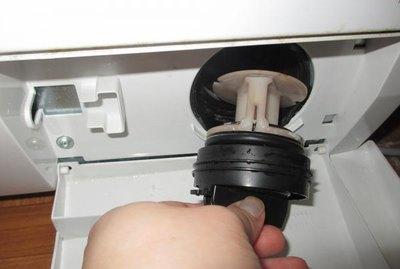
Small debris, threads, buttons, coins do not disappear without a trace. All small items migrate to the drain filter and are overgrown with mucus, bacteria and debris, forming unpleasant "lumps". Therefore, manufacturers recommend clean the filter every 30 washes.
You can get to the filter yourself. The bottom panel provides for a bar or a rectangular door, pushing or pulling it out, you will get to the cherished mechanism.Turn the cap counterclockwise. If a fixing screw is installed, unscrew it.
Start brushing with a toothbrush and soapy water.If the contamination is significant, add alcohol or a chlorine-containing compound to the water. Carefully remove the blockage and clean the filter with a detergent mixture, rinse. Install the part in place, tighten tightly. Run a test wash to make sure the filter is not leaking.
How to descale a washing machine
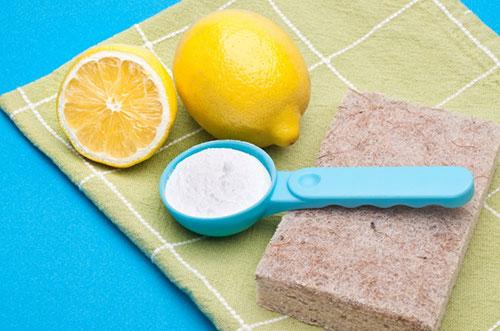
Limestone deposits hide on internal parts and often the user is unaware of their existence until a breakdown. Tablets and powders for prevention often have a low degree of effectiveness. To reduce the cost of household chemicals and secure the washing machine, use the following recommendations:
- You will need 100-300 grams of citric acid. The quantity depends on the maximum load of the machine. Pour the agent into the powder tray (“B” or “II”), set the high temperature for a long time.
- You can use white vinegar instead of citric acid. Pour 0.5 liters of vinegar into the powder compartment. Activate the mode without prewash and with a temperature of 90 °C. 15 minutes after the start, press pause. Start after an hour. Acid will dissolve deposits in all hard-to-reach places. After the program is over, start the quick mode to ensure that all residues are washed away.
In severe situations, seek help from specialized means to combat (not prevent) scale. These include Antinakipin and the like. Place of purchase - economic department.
Prevention</h2

Caring for a washing machine is much easier and cheaper than repair work.The following tips will help you keep clean and take care of the good condition of the washing unit.
Disinfection
To get rid of bacteria, fungi and other uninvited guests, it is necessary to prepare an explosive mixture. You will need chlorine bleach and active laundry detergent. The ratio is 1 to 2. Send the mixture to the dispenser container, then to the drum. Run the machine dry at about 60 °C. This procedure can eliminate unpleasant odors, light pollution and colonies of microbes.
How to prevent the occurrence of "troubles"
So that annoying black mold, ubiquitous scale or an unpleasant smell do not disturb you, it is enough to regularly carry out a number of preventive measures and follow the rules of care:
- Arrange a lemon or vinegar thrashing at least once every six months.
- Do not use only liquid powders, alternate with granular products or tablets, dilute concentrates with water.
- Thoroughly wipe the rubber seal and sight glass, rinse and dry the tray.
- Ventilate the machine after every wash. If possible, leave the door always open.
- At the slightest hint of mold or an unpleasant odor, immediately proceed to exterminate the enemy.
Only 5 simple rules and your machine is always "on the go".
